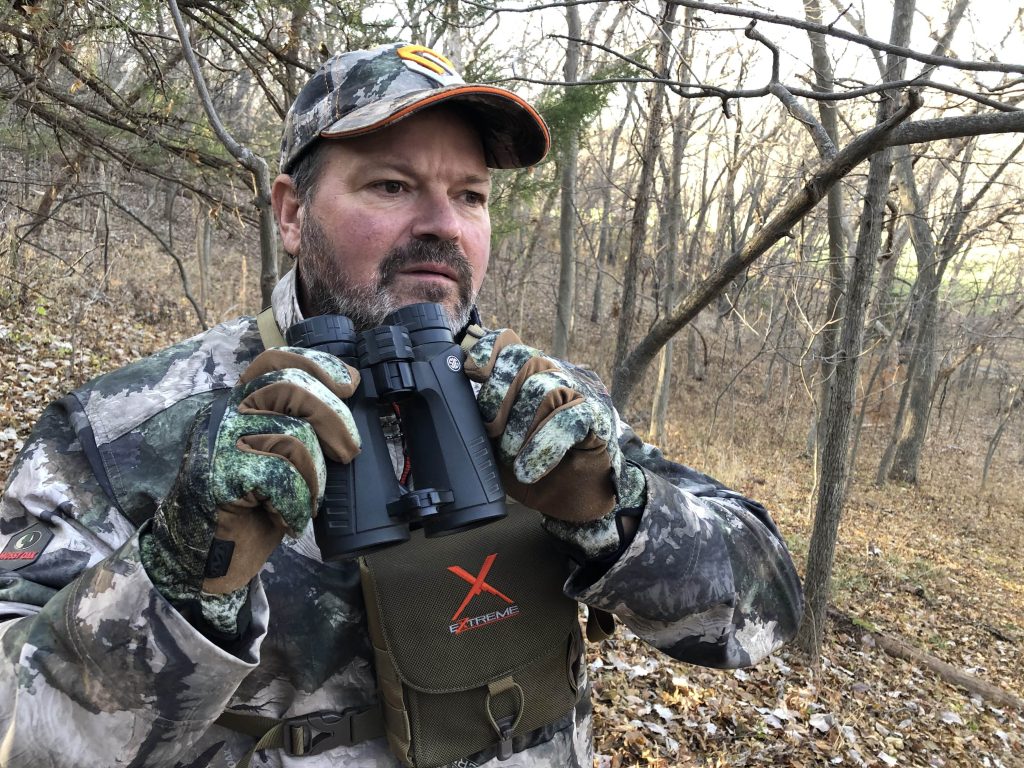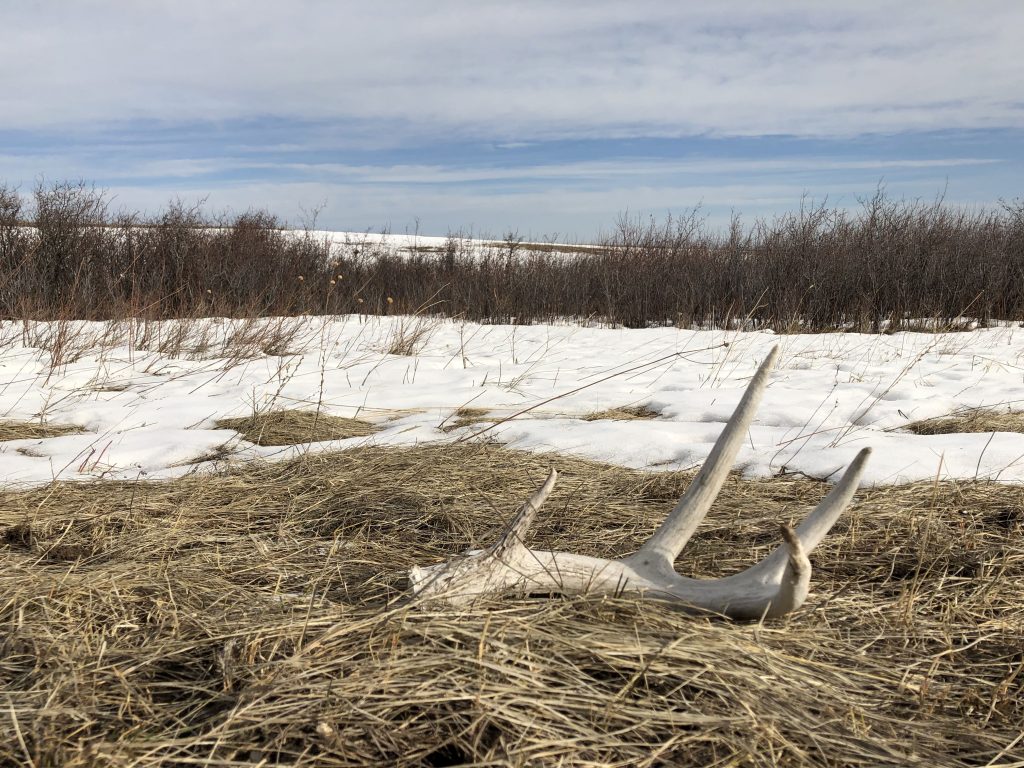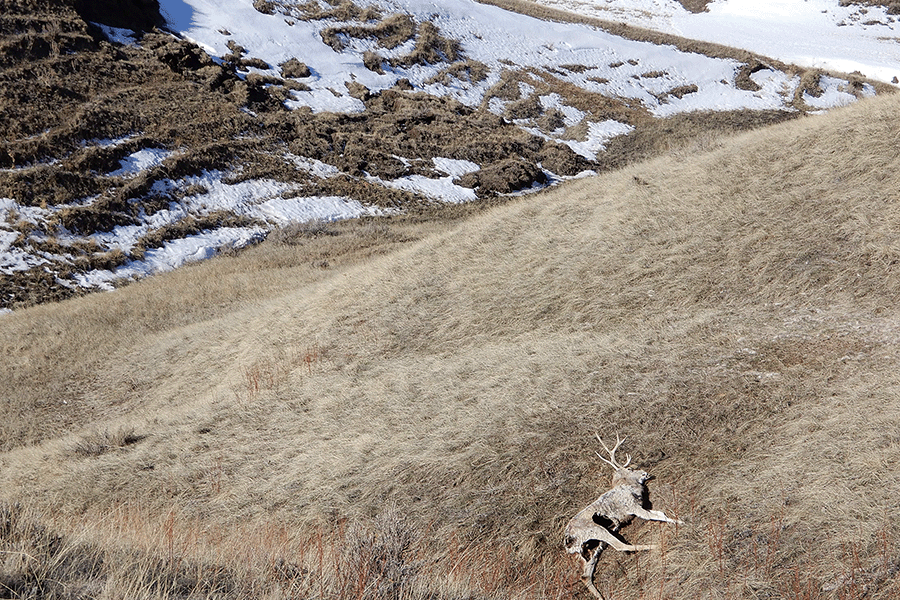Shed hunting has been an addiction for me since I found my first shed whitetail antler as a 10-year-old in the mountains of South Dakota. Like striving to win a high-stakes scavenger hunt, the thrill of finding that next antler is the obsession-forming ingredient of being out there. Over decades of shed hunting, the treasures of antlers begin to have another meaning of equal significance for me: knowledge. Every hour spent in the woods, prairies and backcountry sheds (yes, pun intended) light on hunting areas, giving me added intelligence on the homelands of the critters I hope to pursue.
Something To Do
Of course, shed antler hunting is something to do while you wait for turkey season to kick off or the morel mushrooms to spring up. There is no shame in using any excuse to be outdoors, especially after a long winter. The exercise alone is worth a trip to the fields to search for any tines sticking up from the forest floor. Any break from the sweaty interior of a gym to walk with your dog outside must be a good thing. Right?
Deer begin dropping their antlers soon after the new year and continue into April. Elk begin dropping antlers in March and continue into early May in some locations. A variety of factors affect when an ungulate will drop its antlers. Age of the animal, testosterone use during breeding, winter stress and a genetic code all play into the very moment an antler is ready to be jettisoned.
To time your journeys for optimum opportunity, utilize your scouting skills. I keep my Sig Sauer ZULU 10-power binocular on the dash of my truck to view deer from afar. Bachelor groups of bucks or bulls that suddenly have some members blending in like females equals the beginning of shed season. Trail cameras also are great partners to monitor the status of shed season in your region. Models, like those from Moultrie Mobile, even send images straight to your smartphone so you do not even need to make a trip to the field to check SD cards.

Glassing for shed antlers.
When you do finally begin acquiring some shed antlers you have two options. Admire and display them, or you can cash them in for some extra cash. With fuel prices out of control like government spending, selling antlers may be your only choice to fund your next outdoor pursuit. Bummer.
Regardless, each trip into hunting country reveals loads of knowledge you can use to make a property better, consider new hunting areas or plot a plan for guaranteed fall success.
Inventory The Habitat
Whitetail, mule deer and elk hunters should all take a close look at country during their incursions for shed antler finds. The health of big game habitat has an enormous impact on the animals living there. Unlike you and a mortgage, if animals do not have what they need at home, they will migrate for survival. This may leave you lonely in a hunting location you deemed a hotspot.
Since you will likely scour food sources on the hunt for bone, stop and examine to see if anything is remaining to scavenge, especially in food plots you may have planted. Whether you are hiking across vast agricultural fields or manicured food plots, inspect if the deer have quality food available to carry them into spring. Also consider what the future holds and if perennials need to be replanted, or if annuals need to be adjusted to a different crop.
Perennials, like clover and alfalfa, green up early so it is imperative you review their spring potential and whether a reseeding is needed the coming year. These green fields are critical components to a property as they offer nutrition year-round in most environments.
Interior forests, timber edges and brush pockets also play a significant role in overall nutrition. As you hike through woodland settings, be alert to any over browsing situations with a defined browse line on trees signaling danger ahead. Although deer may appear to feed exclusively on a tailored food source, browse is critical to a deer’s digestive system working smoothly. It also provides nutrition in a sheltered environment when nasty weather forces deer to vacate field openings.

Not only do you learn country as you hike for shed antlers, but you also get great exercise.
As for prairies and mountain mesas, survey to see if the area appears overgrazed. Elk and deer feed on different vegetation, but the overall pressure could be too much for an area if many animals settle there. You also need to consider the fact that most public lands are grazed in the warm months by livestock, thus hitting lands with even more pressure that could make wildlife look elsewhere for greener pastures. Spring moisture can change that, but drought could also snowball a bad habitat event into a catastrophe. Make notes because poor habitat conditions could harm your later hunting.
Inventorying The Herd
Everyone likes to view wildlife when you take a hike into hunting areas. Use those visits to inventory the big game numbers in your hunting area. Your survey will not be scientific, but it gives you insight on whether animal populations appear healthy or are crashing.
One of the areas I hike for shed mule deer and elk antlers has been on the downhill decline regarding mule deer for a decade or more. In fact, the population is so poor for mule deer, if I do find a fresh shed mule deer antler, it is a shock. Elk, on the hand, appear to be fairing well and even expanding in numbers.
As you view animals, keep your distance and use a binocular, but note the health of the animals you see. Do they appear frisky, nimble or even plump? If they appear haggard, lethargic and reluctant to flee it could be a sign of poor health. The discovery of dead deer or elk during your hike also means you need to take notice and see if they are under nourished or even preyed upon because of poor health.
Reporting any major deaths to a local conservation officer or biologist is warranted. Sometimes habitat declines or disease outbreaks are localized. Warning the right people early can help them address any needs immediately.

While you hike country looking for shed antlers, be sure to analyze the health of the habitat to help you adjust later hunting plans if the area does not recover.
Plan Ahead
You can never plan too early for the hunting season ahead. Shed antler hunts help you begin paving the way toward a super hunting season. Having that hard evidence of shed antlers in hand gives you a boost of confidence, but the act of shed hunting alone also jumpstarts any hunt. By hiking and sneaking around a hunting area you obtain a unique, firsthand perspective of country that satellite images simply cannot provide. No matter how hard you peer at your screen you cannot see under the canopy. Subtle funnels, hidden benches, traffic-jam trails, rub clusters and other sign must be seen in person to understand their full hunting potential. Topographical maps can reveal these ever-so-slight land variations, but it is only onsite scouting that reveals whether deer or elk really utilize a terrain factor like you suspect.
Making notes on apps, like HuntStand, allows you to mark clusters of scrapes, note rub lines and document areas of intense bedding activity. As you prepare for hunting season you will not need to invade as far into these areas, but you will know what outside trails to set up on to target the interior hotspots. Hunt the edges of refuge you discovered in the offseason makes for smart hunting.

A quality hunting app, like HuntStand, can be an excellent tool in taking notes as you hiked country looking for shed antlers.
Lastly, shed antler hunting aids you in learning the country for speedy access. Not only will you understand how the deer and elk utilize trails, but you will experience the speed in what corridors leads you to the action most efficiently. And breath easy about your incursion. Any invasion in the spring will long be forgotten by the inhabitants when hunting season arrives.
Be Kind
In closing, be ethical. Wildlife going into spring are at their weakest. Bucks and bulls have burned off stored fat during the rut, and whittled away any leftovers to keep warm for winter survival. Females have also depleted their fat reserves and any added anxiety could cause them to abort fawns, or calves. Many habitat areas have seasonal closures for this reason and some states even have specific shed antler hunting regulations.
Check on rules with your state or provincial wildlife department before hitting the fields. Plus, try to plan your trips during warmer, spring days to give animals time to recover from winter rigors. Even then, if you do encounter wildlife, keep your distance and circle wide to avoid having them sense your presence.
Finding shed antlers gives you the indisputable evidence a bull or buck made it through hunting season and likely the remaining months into spring. A handful may die yet from an anomaly, but bad luck aside, if you find shed antlers, you stand a good chance of hunting that very animal in the upcoming season. The information you accumulate during your outings jumpstarts your hunting season exponentially.
For more about Mark Kayser and ways to follow him on social media, visit www.markkayser.com.





